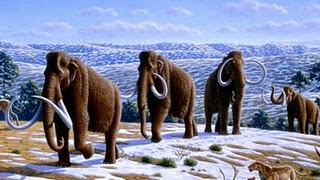Definition of Lithic Stage
Miscellanea / / November 13, 2021
By Florencia Ucha, on Jun. 2011
 It is designated by the name of Lithic Stage to older history of what is now Mexico.
It is designated by the name of Lithic Stage to older history of what is now Mexico.
It can also appear called as a prehistoric stage of Mexico.
Prehistoric stage of Mexico
We must emphasize that the first groups of human beings that populated this area had and shared characteristics common that over time were lost because some peoples and cultures evolved in a way diverse.
The weather each region also played a fundamental role in this regard.
Duration and periods that comprise it
It will be precisely during this period that extends from the year 30,000 B.C. to 2,500 B.C. that the most primitive settlers of the present day arrived territory Mexican. During this very long time the original groups of nomadic hunters and gatherers, little by little, were evolving towards sedentary social formations that were especially dedicated to agriculture in those areas where the soil allowed.
Meanwhile, it was called the Lithic Stage, as a consequence of the primary use that was given to the stone
, Most of the instruments dating from those times were made precisely from stone.Although beware, the stone was not the only material that these men used, surely they used many others, although, the stone was the material that best withstood the passage of time.
The lytic stage is subdivided into four major periods…
The archaeological, which began in the year 30,000 BC and ended in the year 9,500 B.C.
During this time, instruments began to be used to carry out certain tasks. As no projectile points have been found, it is believed that the advances were oriented towards the collection and processing of vegetables and animals. Among the representative sites of this period, the following stand out: Laguna Chapala in Baja California, San Luis Potosí, Tlapacoya, El Cedral and the State of Mexico. Being small sites and that compared to what followed, they were few, it follows that the population it was minimal, probably of a family nature.
For his part, lower cenolithic, the second period, which extends from 9,500 B.C. to 7,000 B.C. stood out for the climate change, which exactly coincided with the change from Pleistocene to Holocene. Due to this situation, cultural practices and the way of organization had to be reformulated. During this time, a notable improvement was experienced in the technique of elaboration of instruments, the tool specializes and diversifies, emerging on the one hand the grooved tip and on the other the blade-shaped tip.
Hunting becomes the quintessential resource for survival.
Meanwhile, the upper cenolithic, starts in the year 7,000 BC and ends in 5,000 BC. It is in this period in which the mastodons and mammoths became extinct, a fact that prompted the search for other species of animals to hunt, drifting towards animals smaller than those mentioned and towards another activity such as gathering. New technologies applied to vegetable processing were also developed.
And finally, the protoneolytic, which started in the year 5,000 B.C. and culminated in 2,500 BC. The main novelty was the emergence of agriculture which resulted in traditions sedentary lifestyles that came to replace the nomads. The instruments that are produced are totally dedicated to the processing of vegetables, one of the most outstanding of this period is the mortar.
The Mortar is a utensil that has a concave shape and is used to crush inside it, spices, seeds or other substances and food.
Earlier we mentioned that the climate and geography of this vast region were very decisive in marking the diversity of peoples who settled in it.
Characteristics of the climate, soil, vegetation and fauna
Meanwhile, we could divide it into different areas ...
Aridoamérica is the region that begins in North America and borders Mesoamerica to the south, to the west with oasis America, to the north with the plains, and to the east with the Gulf of Mexico.
As its name already anticipates, it is characterized by being an arid area, which has soils of volcanic origin and the biodiversity present is closely related to these features.
Peregrine falcons, field rats, armadillo, desert tortoise, roadrunners, free, deer, snakes, coyotes, among other specimens predominate.
As for the flora, there are the yucca or also known as the desert palm, the huizache, the nopal, the peyote and different types of cacti.
In the region of oasis America sedentarism came later than in Mesoamerica. Its inhabitants hunted and gathered, but at the same time they planted corn, squash, beans, tomatoes, and domesticated some animals. They used a special system for sowing, they created channels to deposit and thus regulate the use of water.
They built urban centers and also developed crafts.
And Mesoamerica is undoubtedly the area with the greatest complexity and cultural variety and also the most densely populated, occupying the entire country and Central America.
Unlike what happens with the northern area, it was more conducive to developing agriculture, the diversity of soils and climates allowed it.
Since 2000 there are records of sedentary groups that were dedicated to agriculture.
Large urban centers, impressive buildings such as pyramids and platforms with steps, hydraulic works, commerce, and games developed here.
Themes in Lithic Stage


